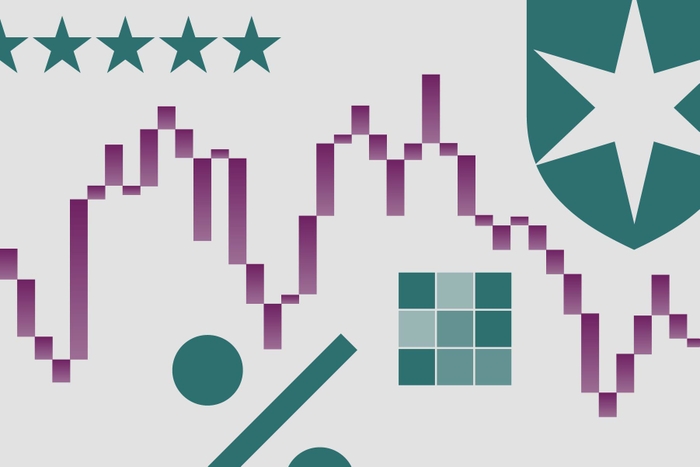
From the beginning of 2023 to the rally of November, while the rest of the stock market remained essentially flat, the Magnificent Seve Stocks (Nvidia NVDA, Tesla TSLA, Meta META, Apple AAPL, Amazon AMZN, Microsoft MSFT, and Alphabet GOOGL/GOOG) rose 73%, accounting for 80% to 90% of total gains.
But then, from the low point of the market on October 26 to the end of 2023, “the rest of the market was up 15.2% while the Magnificent 7 gained 19.7%,” points out Philip Petursson, Chief investment strategist at IG Wealth Management.
Now, a cooler appraisal is settling in. “These stocks are trading at a price-earnings multiple of 38, while the 20-year historical average of the S&P 500 tech index is 22.” The whole technology sector has also moved beyond fair valuation, calculates David Sekera, Chief U.S. market strategist for Morningstar. “Following the 13.29% surge in the Morningstar US Technology Index in November, he says, the valuation has risen to an 8% premium. It’s a good time to move back to an underweighting and take profits in stocks that have become overvalued and overextended.”
It's Time to Underweight Technology
As early as December 2023, research by Goldman Sachs showed that leading mutual funds and hedge funds “were betting on gains outside the tech sector in the coming months.” Analysing US$ 5 trillion worth of stock holdings, the investment bank found that none of the Magnificent 7 were to be found in the top ten stocks held by mutual funds and hedge funds.
Such a finding doesn’t surprise John Rekenthaler, Vice-president, research, for Morningstar Research Services. “Historically, mutual funds tend to underweight the largest market positions, he notes. They like to be diversified and they’re always thinking of beating the markets. Now, the large positions are really large; so this tendency to underweight will be an even greater tendency.”
Philip Petursson has certainly underweighted the Magnificent seven stocks, but then he has also underweighted the whole U.S. market. “I’m still underweight U.S. equities versus Canada and the rest of the world,” he says. It’s not that he disparages the large tech stocks, but he recognizes that their growth is now mostly hitched to the AI wagon.
Has AI Run up As Much as It Will?
“I don’t think AI is a fad, Petursson recognizes, but people are making of it more than what it could end up being. It brings back to mind the Web craze of 20 years ago with stock names like eToys and pets.com. They were propelled by the market as a new way of doing business, but a lot of those businesses were mismanaged. I think we will see the same with AI.” Success of AI will depend on how companies integrate it in their way of doing things, and it will be very different from one company to another, with varying degrees of success and failure. “I don’t think the market has a good handle on that,” he believes.
Sekera shares somewhat similar views, recognizing that there certainly is a lot of value in AI, but “in the rush to buy AI stories, investors subscribed to the obvious stories and missed companies that can win from the long tailwind. The obvious plays in AI have had their day, but we see opportunities in stocks that we consider as derivative plays on AI.” He draws investors’ attention to much less know names like Cognizant, a consultant in the field of AI, and Snowflake, a data warehousing firm that trains AI models.
Many Gains to Be Made Outside Tech
Most of the opportunities that Sekera and Petursson find lie outside the technology pen. In early December, Sekera found that communications services and real estate exhibited the lowest undervaluation score, the fist standing at 0.84, the other at 0.86. For example, just before Christmas, Verizon (VZ) and AT&T (T) stood at 33% under fair value even if Verizon’s dividend yield holds at 7.1% and AT&T’s, at 6.7%.
Sekera sees a lot of upside on these stocks. “There will be a lot of consolidation in the sector, notably with TMobile (TMUS) also. Those companies will behave like an oligopoly and compete less on price to allow margins to expand.”
Banks are one sector on which both specialists agree. In early December, Sekera found that the financial services sector had a 0.93 undervaluation score. “Their balance sheet problems are behind them, Petursson says. If we’re going toward a soft landing, banks are well positioned for that. Their valuation has moved up in the last few months, but they’re still trading at shy of 10.9 of forward earnings.”
A sector where both specialists disagree is industrials. Sekera perceives that they are now fairly valued, an estimate that Petursson agrees with. However, he believes that the coming times will favour industrials. “We expect the economy to be in a recovery mode toward the end of 2024, which will be good for industrials. We think companies will reinvest to answer renewed demand.”





:quality(80)/cloudfront-us-east-1.images.arcpublishing.com/morningstar/TEJ2DISYWZHSBII4TW4QYHB7B4.png)


















